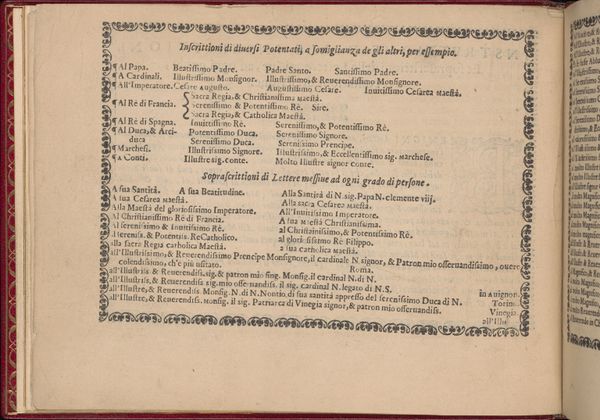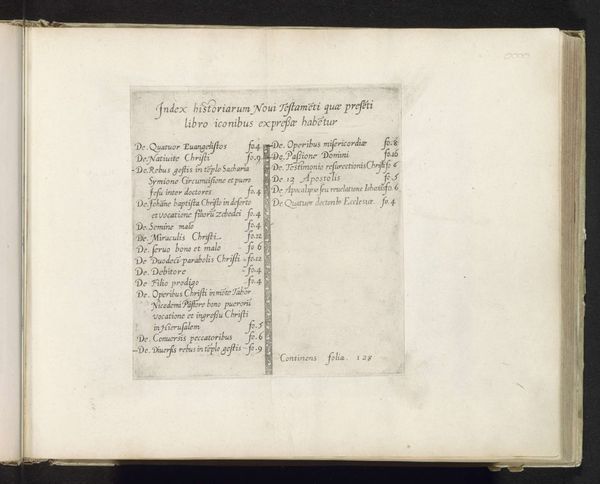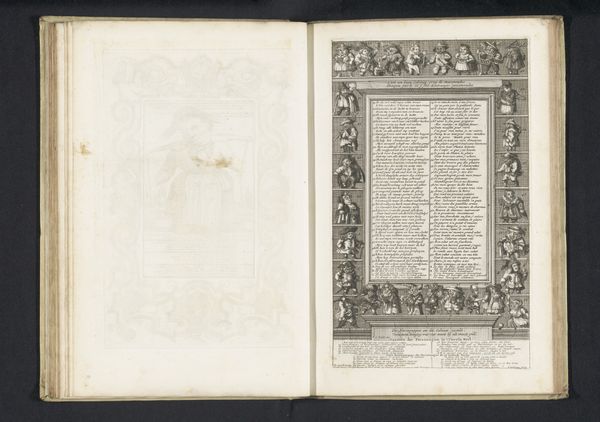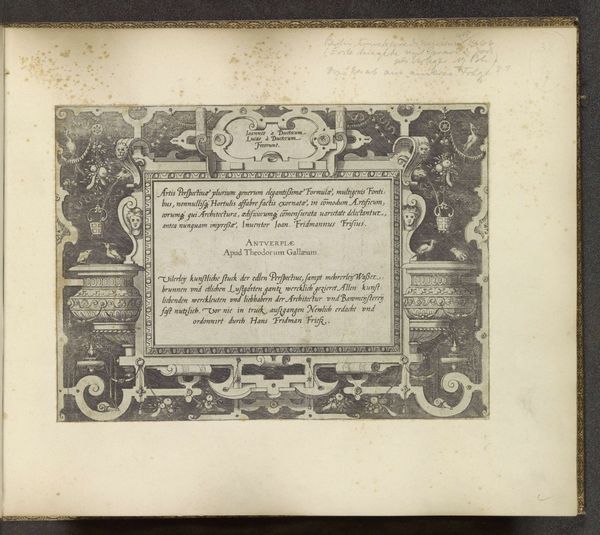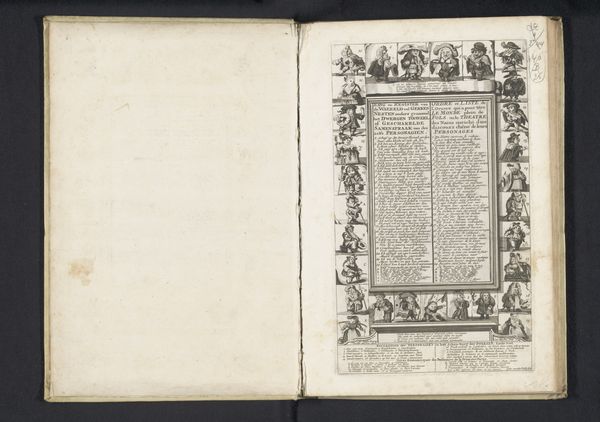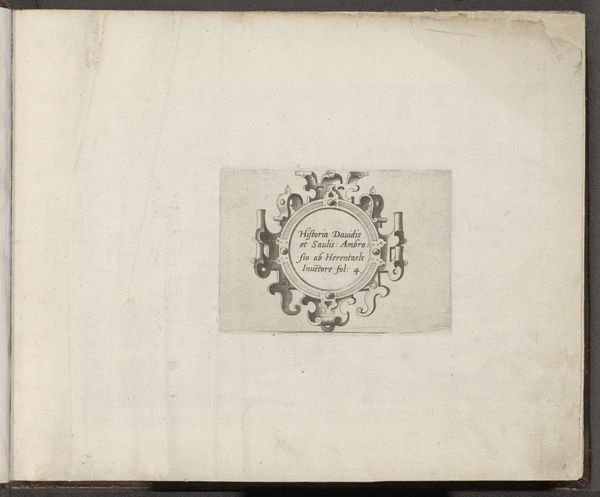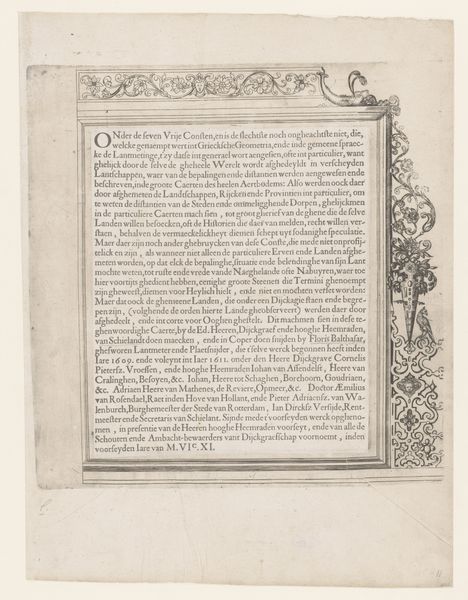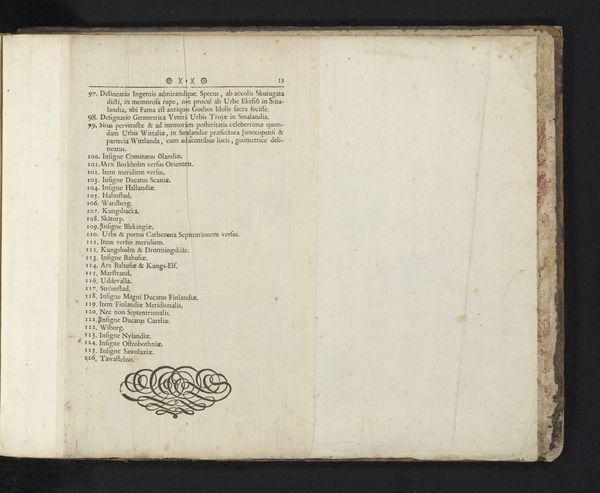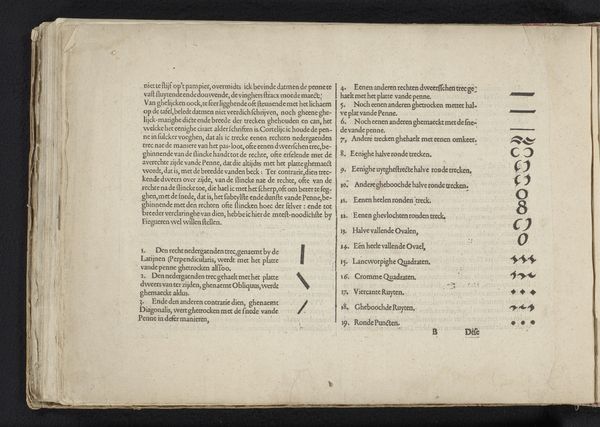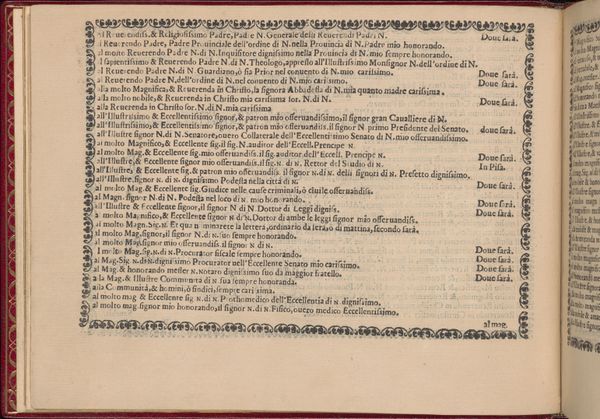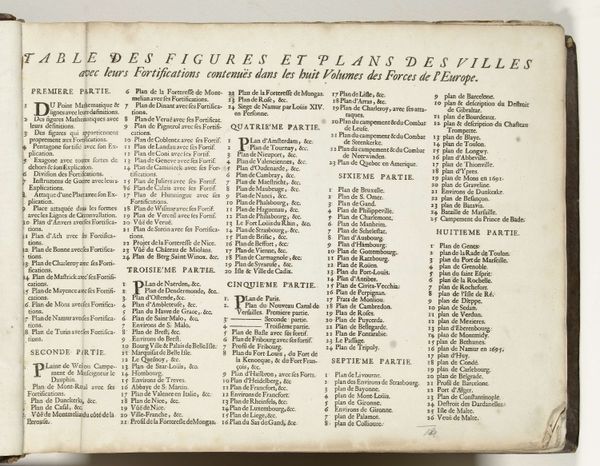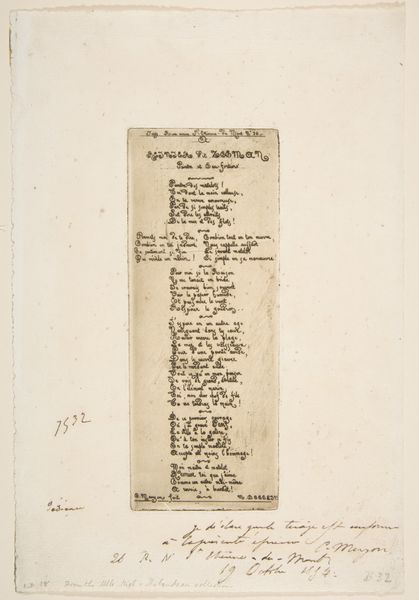
graphic-art, print, typography, engraving
#
graphic-art
#
medieval
#
ink paper printed
# print
#
11_renaissance
#
typography
#
engraving
Dimensions: height 199 mm, width 275 mm
Copyright: Rijks Museum: Open Domain
This ornamental list of contents for the Old Testament was made by Gerard de Jode in Antwerp sometime in the late 16th century. It’s an engraving, meaning that the image was incised into a metal plate, likely copper, and then printed onto paper. Engraving was a highly skilled, laborious process. It was also central to the spread of information during the early modern period. Think of this image in relation to broader shifts in labor, politics, and consumption. Each line of text, each flourish of ornament, represents hours of painstaking work by a trained artisan. De Jode, as the artist, would have relied on the expertise of skilled engravers to translate his design into a printable image. The clean lines and precise details of the engraving are a testament to the engraver’s skill. These elements also reflect the growing importance of accuracy and standardization in early modern Europe, driven by the rise of commerce and the scientific revolution. By considering the material processes behind this image, we can appreciate its significance as both a work of art and a product of its time.
Comments
No comments
Be the first to comment and join the conversation on the ultimate creative platform.
